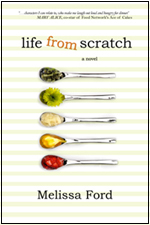IVF (FET or Frozen Embryo Transfer)
IVF (FET or Frozen Embryo Transfer)
by Bea
Why Would You Be Having An FET?
1. Because you had extra embryos left after your fresh transfer cycle. There is a limit to how many embryos can or should be transferred at one time. This limit will vary from patient to patient, for both personal and medical reasons, and also according to the laws and guidelines in your region of the globe. Extra embryos of good enough quality can be frozen for later use. This cuts down the amount of drugs and treatment you need to have to achieve a pregnancy.
2. Because, although you made nice embryos, your fresh transfer was cancelled. This may be the case if you are at risk for ovarian hyperstimulation syndrome.
3. Because you are using donor embryos (which will usually be frozen).
What Can You Expect?
1. First, your specialist will decide on a protocol. In some cases, there is a clear reason for choosing one protocol over another – a post-menopausal woman, for example, will most certainly be prescribed a HRT protocol (see below). Other cases rely on a review of many factors, including cause of infertility, clinician and patient preference, and response to previous protocols. In other words, it’s very complicated and frankly, half the time it’s either hard to know what is best in advance, or it will make little difference to your chances of success either way.
At the basic end, you have the natural FET. You are monitored for ovulation and lining thickness, and embryo transfer is scheduled for several days after ovulation. The exact timing will depend on the age of the embryos at transfer. If you have frozen the embryos at day two, transfer will happen two days after ovulation. If you have frozen the embryos at day five, transfer will happen five days after ovulation, and so on. The idea is to mimic the natural process as closely as possible. As in the natural situation, the timing doesn’t have to be ultra-precise, with studies showing there is up to twenty-four hours leeway.
A natural cycle may be used with or without some form of luteal phase support. Commonly you will be given two or three hCG injections and/or progesterone supplements (pessary-style or injections). Again, protocols for luteal phase support vary wildly, sometimes starting before transfer, sometimes the day of transfer, some continuing until beta (and perhaps beyond if your test is positive), and others continuing only for a set number of days, no matter what.
If you don’t ovulate reliably on your own, your specialist may use an ovulation induction (OI) protocol, in which ovulation of a single follicle is induced (usually using FSH injections). You will either be monitored for a natural LH surge, or triggered with an hCG injection. Transfer and luteal phase support happens as per a natural protocol.
Hormone replacement therapy (HRT) protocols are favoured by some specialists, and for some patients. These use hormone tablets, patches, pessaries or injections to mimic the natural cycle, plus or minus a GnRH agonist/antagonist to shut off your body’s natural control. The simplest and most common protocol seems to be oestrogen tablets until the lining is thick and ready, followed by progesterone supplements, with transfer happening near the beginning of the “luteal” (progesterone) phase.
2. Prior to transfer, your embryo will be thawed out. Fifty to eighty percent of embryos survive the thaw. By thawing the day before transfer, the lab ensures plenty of time to thaw extra embryos if need be. It also gives a chance to see if the embryo will resume growth after thawing – those that don’t are very unlikely to survive inside the uterus.
It’s also possible to thaw a batch of embryos and grow them for a few days prior to transfer–for example, if you have decided to grow day two embryos to blast. An embryo can be thawed, grown, and re-thawed providing it remains of good enough quality.
3. The transfer itself is exactly like a fresh transfer. The procedure is similar to an IUI (which feels a bit like a pap smear) except it is performed in the hospital for easy access to the laboratory where embryos are kept and thawed, instead of in the doctor’s rooms. You are usually given a short period of rest, and your doctor will let you know if there are any other instructions. Some doctors prefer you to rest for a day or more, just on the off-chance this helps, although numerous studies show no benefit to restricting your normal activities for more than twenty minutes after the transfer is done.
Problems That May Arise And Ways To Trouble Shoot
1. Problems with giving medication. Please see trouble-shooting suggestions under subcutaneous injections, intramuscular injections or progesterone.
2. Cysts and other nasties. If a cyst is discovered at the beginning of your cycle, your doctor may want to treat it before going ahead with transfer.
3. Ovulation is not happening or the lining is not thickening. Most of the time, your specialist will simply prescribe extra drugs and continue monitoring. If the problem is severe, your cycle may be cancelled and a new protocol put in place for next time.
4. It’s a natural cycle and ovulation is missed. Your cycle will be cancelled and you will be monitored more closely next time, or placed onto a medicated cycle for greater control.
5. Embryos do not survive the thaw. From personal experience, it is possible to thaw four embryos, one by one, in the twenty-four hours prior to transfer, and almost certainly more, depending on how quickly each succumbs. This is, of course, wrenching in its own way, but as long as there are embryos left, you will not need to worry about your cycle being cancelled.
If none of your embryos survive the thaw, it’s possible to start a full cycle straight away. For example, if you usually start sniffing or around day 21 or so of the cycle prior to EPU, you can start your drugs within a week of your cancelled transfer day.
6. Unusual spotting in the middle of your cyle. If it’s happening in your luteal phase, your specialist may prescribe extra drugs to support the lining. If it happens prior to transfer, your cycle may be cancelled pending investigation – depending on the opinion of your specialist. Unusual spotting is very common, not always explanable or treatable, and can happen even in successful cycles. Having said that, please report it to your doctor immediately.
Personal Tips
A frozen embryo transfer is easier, physically and emotionally, than a full cycle. As you can see, problems do sometimes arise, but most people find things go fairly smoothly until beta day – so please try not to let the above list panic you! There is often some trial and error involved in finding the best protocol for your body. Good luck – and yes, FETs do work for many people!













17 comments
Thank you so much for this information. It has been VERY helpful.
Our doc says FET success rates are about the same as regular transfer rates.
Hi , my doctor said the chances are much higher abt 65-70% in cases of fet. Gud luk
Any thoughts re. timing of the FETs? That is, how long from "yes, we want to transfer those embryos" until the actual transfer?
Very helpful article.
I had a fet just yesterday. The embryo has been frozen for a year. I’m on bedrest for the next 3 days. I’m following the doctors instructions to the point. I’m hoping this works. I have a son from another embryo transfer. But I want another child. This was a very helpful article.
Claudia, how did it go? We are about to start a FET cycle, but I’m afraid as we only have two frozen embryos….
[…] https://www.stirrup-queens.com/2006/07/ivf-fet-or-frozen-embryo-transfer/ […]
Thank you for this – I’ve just finished my first failed IVF & ICSI cycle, we have 1 IVF 5 day blasto and 3 ICSI 5 day blastos in the freezer. I’m heartbroken that it didn’t work out for us – I’m young (34) and healthy – my hubster’s swimmers aren’t great but are on the up with strict lifestyle changes. Our funding only covers one full cycle, I have funding for natural FET / IVF (2 cycles) so I was keen to find out what we can expect. I feel I can now start making a plan for our next steps – thank you x
Following on from my last post I’m pleased say that our funding actually covers medicated FET – I’m on day two of down regulation and I’m already feeling lethargic and way too hot but that’s fine – have to be positive on this roller-coaster. Having re-read this post I’m now feeling good about the world – thanks again .
Im 7days post etf wat going i feel nothing
I’m having a natural FET, ( and i have day 6 frozen blasts)
how precise do we have to know when i ovulated? My ovulation kit did’t gave me the right reading…
Thank you
There are two other reasons for FET
1) Studies are showing that FETs are at least as good as fresh cycles and for some women even better. The studies show that the reason fresh has been more effective than frozen in the past is that doctors are selecting the best possible embryos and therefore frozen embryos are at least slightly sub par. The theory is that “all embryos being equal” the womb may be more receptive with FET than after the invasive stimulation and retrieval.
2) More and more clinics are doing Comprehensive Chromosome testing which in most cases requires the freezing of all embryos post-biopsy while the patient waits for results.
Does the day of a FET depend on the development stage of the embryo? For example would a hatching blastocyst be transferred a day or two earlier than if it were already fully hatched?
i have just had a d/c for a failed fresh donor cycle; clinic wants we to start estradiol immediately to prepare for FET in few weeks . Is this possible, I am now menopausal and so may not get a bleed naturally, but is this not all too soon.
Thanks Mel for this nice post. I also agree that frozen embryo transfer is easier, physically and emotionally, than a full cycle.
Umm I disagree. I though the fresh was much easier- less medication to keep track of than an FET. Plus I’m going nuts – can’t sleep, night sweats, weird dreams, emotional- had none of those things with a fresh cycle.